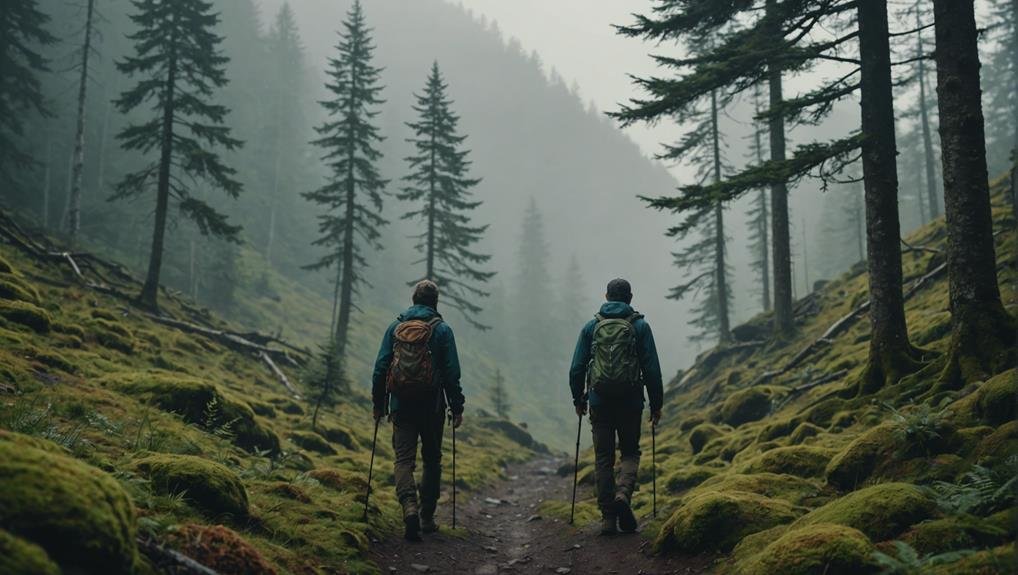You’re not alone in feeling apprehensive about hitting the trails solo. Worrying about safety, getting lost, or even running into wildlife is natural. However, you can greatly ease these concerns by choosing your first trail wisely—a well-trafficked, shorter route.
You’ll also need to pack the right gear and contact someone about your whereabouts. But what happens when the unexpected occurs despite all your preparations?
In the next sections, we’ll explore how to handle unforeseen challenges, ensuring you’re prepared, confident, and ready for your solo adventure.
Key Takeaways
- Start with popular, well-marked trails to ensure safety and ease of navigation.
- Inform a trusted contact of your itinerary and expected return time.
- Carry essential safety gear, including a first aid kit, map, compass, and personal locator beacon.
- Join a local hiking group to gain experience and confidence before going solo.
- Set realistic goals by choosing shorter, manageable hikes to build your solo hiking skills gradually.
Understanding Solo Hiking Fears
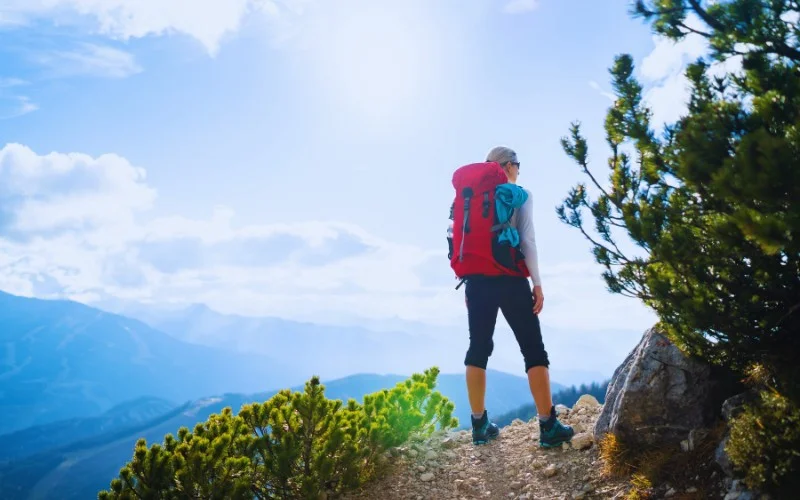
Addressing your fears of solo hiking begins with understanding common concerns like safety, getting lost, or encountering wildlife. It’s essential to identify what specifically worries you—the risk of injury, the possibility of isolation, or the fear of wildlife encounters. Recognizing these fears is your first step toward overcoming them.
To build your confidence, thoroughly prepare and acquire knowledge about the areas you plan to explore. Learn about the local wildlife, understand how to store food safely to avoid attracting animals, and familiarize yourself with the terrain to mitigate the risk of getting lost.
Implementing risk management strategies is key; always inform someone of your itinerary and expected return, carry a charged cell phone, and consider investing in a GPS device or a personal locator beacon for emergencies.
While challenging, the fear of isolation can be alleviated by gradually increasing your hiking time. Start with shorter trails, and as your comfort grows, so will your confidence in handling longer periods of solitude.
Solly hiking isn’t just a physical challenge; it’s an opportunity to connect with nature and understand your limits and capacities.
Choosing Your First Trail
Having understood the common fears associated with solo hiking, it’s important to meticulously select your first trail to guarantee a positive and secure experience.
Choosing the right trail can dramatically impact your comfort and confidence levels, ensuring that your first solo hike is enjoyable rather than intimidating.
Here are three key considerations to guide you in picking a suitable trail:
- Start with Well-Trafficked Trails: Opt for trails known for their steady foot traffic. You’ll feel more comfortable knowing that other hikers are nearby, which is reassuring on your first solo hike. This visibility enhances your sense of security and means help is accessible.
- Choose Shorter Distances and Lower Elevation: Pick trails that aren’t too long or steep for your initial solo adventures. Shorter distances will prevent overexertion, and lower elevation gains will help you manage your energy better, making the hike more manageable and enjoyable.
- Select Well-Marked, Popular Trails: Make certain the trail is well-marked to avoid getting lost. Popular trails are typically easier to navigate and maintain clear paths, boosting your confidence in solo navigation.
Essential Solo Hiking Gear
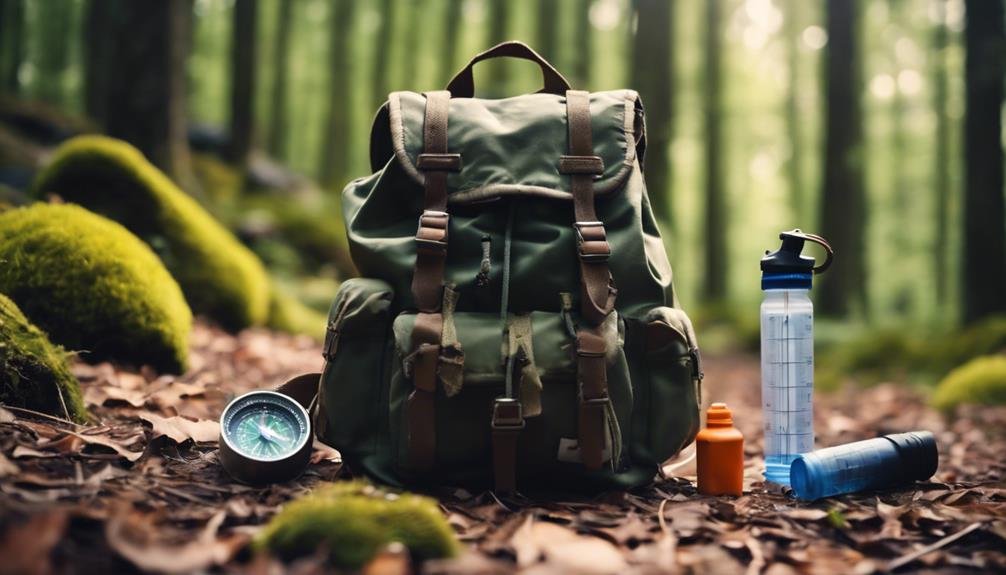
Packing the appropriate gear, beginning with a thorough first aid kit for emergencies, is vital to guarantee a safe and enjoyable solo hiking experience.
As a solo hiker, you can’t rely on others for help, so your first aid kit should include items tailored to your needs, such as bandages, antiseptic, pain relievers, and allergy medications.
Next, you’ll need reliable navigation tools. Even if you’re hiking a well-marked trail, a map and compass are indispensable when walking alone. They’ll keep you on course and help you find your way back if you wander off the path.
Don’t underestimate your water supply needs. A hydration system, whether a simple water bottle or a more advanced reservoir, ensures you stay hydrated throughout your trek. For longer journeys where refilling your supply from natural sources is necessary, pair this with a portable water purifier or treatment tablets.
Proper clothing is also essential for solo hiking gear. Always dress for the worst-case weather scenario, including layers you can add or remove. Finally, pack an emergency shelter, such as a lightweight tent or bivvy, to protect you from sudden weather changes or to provide a safe retreat if you’re unexpectedly delayed.
Communication Strategies
While packing the right gear sets you up for a safe solo hike, it’s equally important to communicate your plans effectively. Here are some essential communication strategies to keep you connected and safe:
- Inform a Trusted Person: Ensure a trusted person knows your hiking itinerary before you set off. This includes the trail you’ll take, your expected return time, and any spots you plan to visit. Remember to give them your emergency contact information.
- Carry Communication Devices: Always bring a cell phone, satellite messenger, or personal locator beacon. These devices are crucial for maintaining contact and can be a lifeline if you need to call for help.
- Check In Periodically: During your solo hike, it’s wise to check in periodically with your trusted contact. Update them on your location and any changes to your itinerary. This routine ensures someone always knows where you are and can act quickly in an emergency.
Setting Realistic Goals
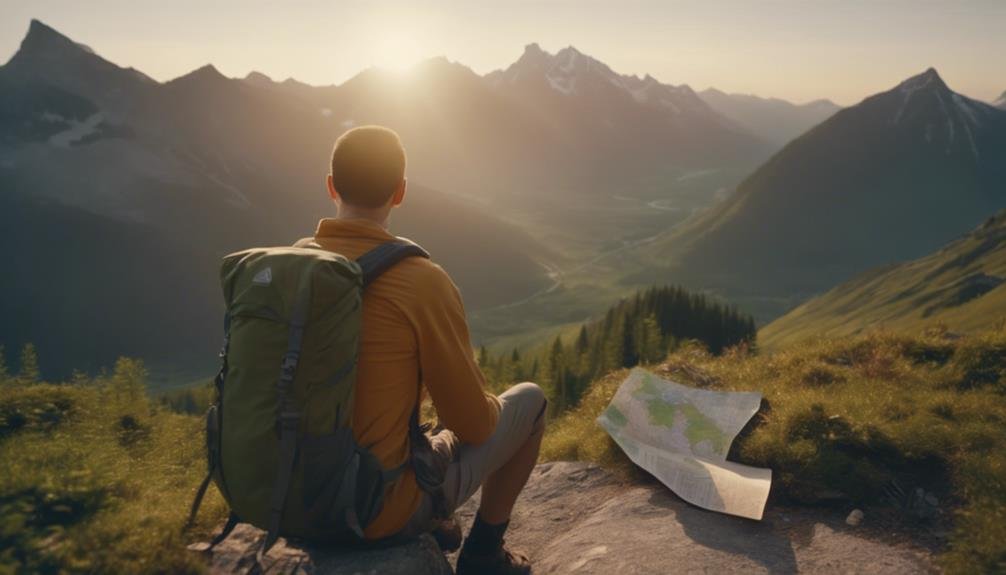
Why not start your solo hiking adventures with attainable goals that enhance your skills and enjoyment? Setting achievable goals that build your confidence incrementally is important when hiking alone.
Begin with short distances that won’t overwhelm you. This strategy allows you to focus on enjoying the experience and learning from each hike. It also guarantees you don’t bite off more than you can chew, which could dampen your enthusiasm for future solo adventures.
Before setting out, consider factors like elevation gain, trail difficulty, and weather conditions.
These elements can greatly influence your performance and safety, so planning sets you up for success. It’s not just about ticking off trails; it’s about mastering them at your own pace and gradually growing your skills.
Celebrate each milestone, no matter how small. Whether increasing your distance, handling more challenging terrain, or hiking despite less-than-ideal weather conditions, every achievement is a step forward.
This practice helps you stay motivated and committed to your solo hiking journey. Remember, every hiker’s path is unique—focus on your progress and keep pushing your limits thoughtfully and safely.
Safety Practices While Alone
After celebrating your milestones, focusing on safety practices when hiking alone is equally important. To guarantee you stay safe, here are key measures you should always follow:
- Inform Someone of Your Plans: Always notify a friend or family member about your hiking route, planned stops, and expected return time. This step is vital as it ensures someone knows your whereabouts and can raise the alarm if you don’t return as scheduled.
- Carry Emergency Communication Tools: Equip yourself with a personal locator beacon or a satellite phone. These devices provide a lifeline to emergency services should you get lost or injured, making them indispensable for anyone planning to hike alone.
- Stay Alert and Turn Back if Needed: Remain vigilant and continuously aware of your surroundings to identify potential environmental threats or changes. If the trail gets too challenging or if you feel uneasy, don’t hesitate to turn back. It’s better to err on caution than to push beyond your limits.
Embracing the Solo Benefits
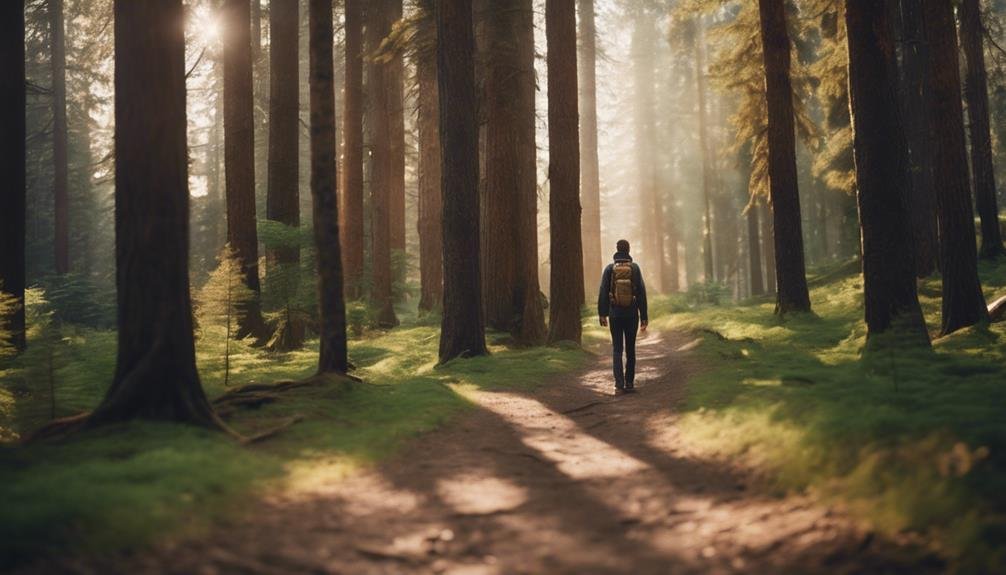
Solo hiking often liberates you, allowing you to tailor your journey precisely to your preferences and pace. This independence isn’t just about choosing your path or the time you start; it’s about experiencing a profound connection with nature that can be hard to attain in a group.
Alone, you’re more likely to notice the subtle details—the sound of leaves rustling, the patterns of light filtering through the trees—enhancing your mindfulness and mental clarity. Moreover, the challenges you face and overcome while hiking alone fuel your self-reliance and personal growth.
Each decision, from traversing trails to managing supplies, boosts your confidence and problem-solving skills. This isn’t just a walk in the woods; it’s a journey that builds resilience and a strong sense of accomplishment.
Disconnecting from the constant buzz of technology also plays a vital role in the solo hiking experience.
Without the usual distractions, you’re free to immerse yourself fully in the adventure, allowing for a more authentic and enriching engagement with your surroundings. Embrace this chance to grow, explore, and reconnect with nature and yourself.
How Can I Overcome Fear of Hiking Solo with the Right Backpacking Gear?
Overcoming the fear of hiking solo is possible with the right essential beginning backpacking gear. A reliable backpack, sturdy hiking boots, and a well-equipped first aid kit can provide peace of mind. Researching the trail, practicing navigation skills, and starting with easy hikes can also help build confidence.
Continuing Your Hiking Journey
Building on your newfound independence and skills from solo hiking, it’s time to explore how to further your adventures and connections in the hiking community. As you continue to hike alone and embrace the solitude, consider these steps to enhance your journey and make sure you’re well-prepared for any challenge:
- Join Hiking Groups: Expand your hiking network by connecting with local hiking groups or clubs. This provides a platform to share experiences, learn new outdoor skills, and sometimes partner up for challenging terrains, balancing your solo adventures with community engagement.
- Enhance Your Skills: Continuously push your limits by exploring diverse environments and terrains. Take wilderness survival courses to refine your ability to navigate and thrive in different outdoor settings. These skills are essential, especially when you venture into solo overnight camping, where self-reliance is key.
- Document Your Adventures: Start a hiking journal or blog. Documenting your hikes tracks your progress and helps share valuable insights and stories with others in the hiking community. This reflection can deepen your appreciation for your experiences and inspire others to leap solo hiking.
Enhancing your skills and connecting with others will enrich your hiking experiences, making every trail a new adventure.
Conclusion
As you embrace solo hiking, remember that preparation and caution are your best allies. Start with well-chosen trails, pack the essentials, and always let someone know your plans.
Gear up with communication devices and set achievable goals to boost your confidence. These safety practices will secure your well-being and help you discover the profound rewards of hiking alone. Keep pushing your limits, and watch how each solo hike enriches your love for adventure.
